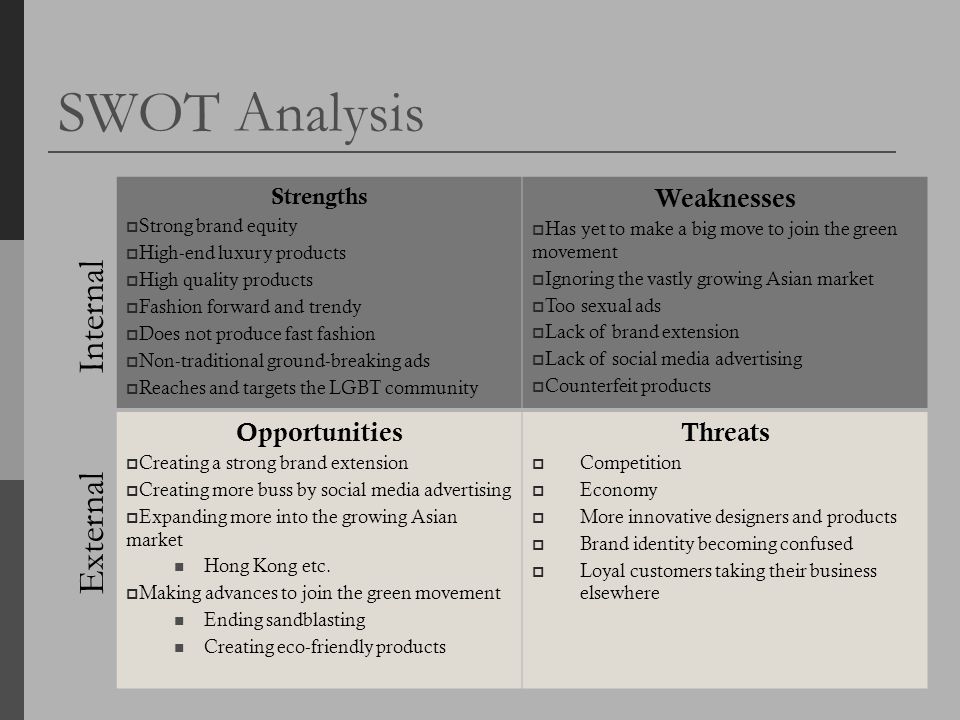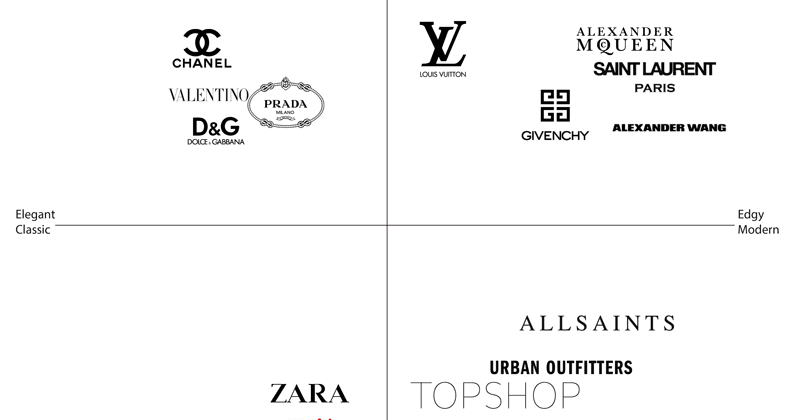Competitive Environment of Dolce Gabbana
Dolce Gabbana is an Italian luxury fashion company that has excelled in the area of providing the perfumes, and apparels. Based on the market understanding of the market, it has been able to offer the stiff competition from other providers such as Gucci. The fashion industry in the current market is largely dominated by the large enterprises, which have acquired the largest pie in various economies (Ramakrishnan and Viswanathan 2015,p.34). In Italy, companies such as Venice, Milan among others, have continually impacted the market by continued innovation in the sector. Despite the changes of the likings of the consumers, the businesses have braced the changes through creativity and considering the preference of the buyers. Dolce Gabbana faces the threats of entry from the other markets, due to the fact that it has not embraced globalization (Fang et al. 2017, p.556). Its expansion is limited to a particular segmentation that impedes the probabilities of benefiting from a huge pool of international markets. The choice to venture in new areas would require succinct analysis of the native state culture of buying. Furthermore, the suppliers’ power is curtailed and regulated by the rate at which stock clears. In the luxury sectors, products such as perfumes are not used by all people. The fact that the brands of the company are consumed based on the choice of the buyer, makes it hard to control the supply (Freeman et al. 2011,p.487).
Far and above, the possibility of substitution exits. Based on the research conducted by Hicks(2015,p.114) Dolce Gabbana offers higher prices for their products. Due to this factor, the customers might opt to go for local brands retailers at small stores, which are sold at low prices. This factor mitigates the chances of the company from expanding in developing nations, which are predominated by low income earners. Additionally, the competition offered by businesses such as Gucci, Florence, Napples among others, reduces the customer basis in the cities where it exist. The rivalry with companies is also a strong factor contributing the low capacity in supplies. Moreover, buyers power of the Dolce Gabbana products are largely the well off(Horn 2015,p.72). They consider using well selected and curated fashions that befits their status in the society. Therefore, high prices augers well with the kind of customers the company targets.
The Brand DNA
Brand DNA is defined as the unique element that distinguishes the business from the similar companies in the same industry. The D&G has maneuvered the market for quite a while, understanding and addressing the new demands of the customers. Despite the surge of modern fashion luxury companies, one thing is clear; D&G has continually researched on what the buyer request, instead of designing their own products devoid of input of the final consumer(Karakaya and Stahl 2015,p.209). One of the brands DNA that the business has employed is through considering the value of the products. What sustains organizations in the market is how well they choose what to offer to the buyers. Based on this, Dolce Gabbana has strongly take precedence. Through the use of well trained employees and creative labor force, more recent and stylish clothes, makeups, perfumes, among others have been pushed to the markets(Kim and Kim 2017,p.44).
Another thing that has distinguished the D&A is the utilization of the current media, to familiarize their offers to the buyers. In the wake of new technology, more opportunities are found in social Medias such as Facebook, YouTube, among others. The company has explicitly employed the Facebook, by giving its viewers the interactive promotions. Far from documenting what they have, images of the actual products are pictured and even motion graphics integrated to improve the taste of the customers (Kotane 2015,p.93). While innovation cannot be alienated from growth of the organization, D&A has not been left out. Before stocking the display, they consider the feedbacks and plan on what to source from the suppliers. The emotional value is displayed by considering the demands of the final user.

Brand Positioning in the Market & brand portfolio
Positioning is the strategy that is employed to compel the customers to buy the products, as opposed to that of the competitors. One way that D&G has employed is offering high quality products. In the modern economy, the clients are much more focused on the value of the goods they receive from the seller. According to Horn(2015,p.73) the ability of the business to override the rivals is by choosing to continually check how the final product impacts the populace. In the case under consideration, the fashion luxury company appeals to the high end select group. They can buy at high prices, as long as the seller meets their requirements. The assertion is supported by Hicks(2015,p.114) who opines that quality is the driver of the modern sophisticated markets. The winners identify the gap, and attract the huge base of customers.
Furthermore, D&G offers slightly lower prices than the similar companies in the same segment of operation such as Versace. While price reduction is not a sure way to earn more customers, the method still applies. A customer would consider saving some coins, instead of spending exorbitantly for the products that can be accessed at lower costs. In Italy, the customers are price sensitive (Lee et al. 2014, p.84). By entering the market with reduced v, the brand has won them more recognition. This has been accompanied by valuing the customers whom they serve. Whatever is displayed on the stores is strongly attached to the liking of the end user. The brand portfolio comprises of a high end niche. This is well supported by the kind of images that are displayed on the website that, consisting of wears for both men and women. It appeals to the high class in the society, whose spending power is high (Lewinsohn-Zamir 2015, p.83).
Brand Strategy and its Uniqueness in the Market
Dolce Gabbana has employed various ways to retain the market relevance. Considering that the products offered are not preferred by the mass customers, segmenting the high users to the low consumers is a complicated task. One way they have used is opening multiple stores in some selected markets such as Hong Kong, Tokyo, India and other states (Ramakrishna and Viswanathan 2015, p.33). However, the locations of the stores are stationed in areas with high number of people who have high income. A huge market is left out, because the highest percentage constitutes of the low income earners. Furthermore, it has tie ups with some ecommerce businesses, to reach to a wide range of potential buyers. This is one of the avenues that is earning the company a lot of returns (Hicks 2015, p.114). The costs of setting up new premises in international markets are significantly lowered, hence increasing the profits received per a given period of time.
The promotion methods through the use of the TV, advertisement, magazines among other have spearheaded the success of the company in the modern market that is filled with the stiff competition. For example, it features its products in the vogue magazine, which is well known for listing top companies (Karakaya and Stahl 2015, p.212). Additionally, the business is infamously known for stereotyping men and women in their advertisement. They objectively use the gender to forge their agenda, which in this case is making more sales. The uniqueness of this company is based on the following the customers in real time. The management has rolled out the mobile application (The D&G Fashion Channel), which connects with customers directly. It’s a strategy that has allowed receiving of the feedbacks, which is core in making right marketing decisions(Horn 2015,p.72).








